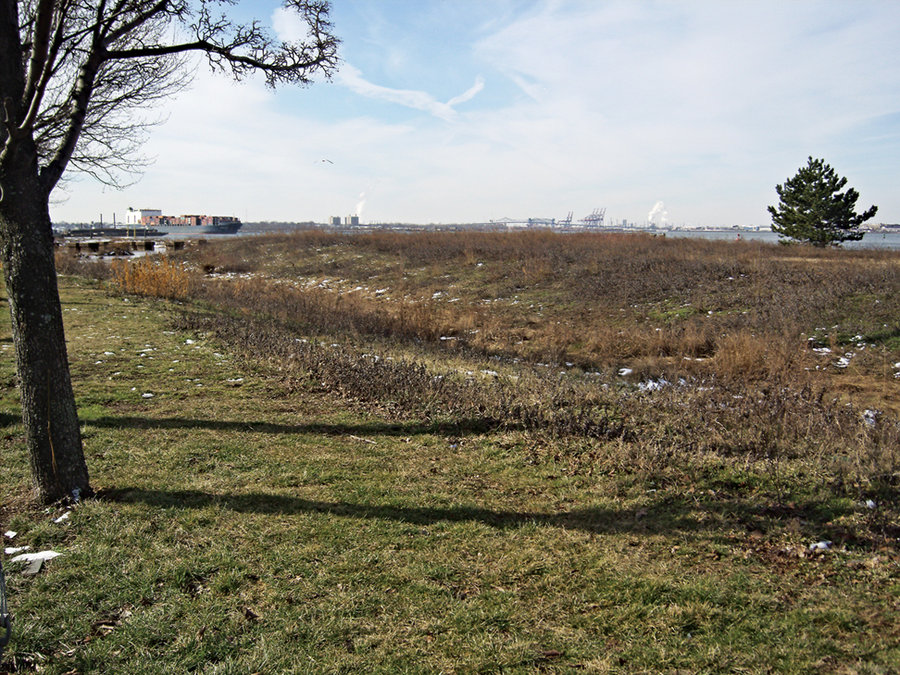Bayonne has embarked on a six-month project that will outline the public’s right to waterfront access, delineate what developers’ responsibilities are in providing that access, and possibly keep money for improving those areas in the city, instead of it going to the state.
The city, its consultant Matrix New World Engineering, and the New Jersey Department of Environmental Protection, began work on a Master Waterfront Access Plan for Bayonne last month.
“The project will provide a framework for balancing the public’s rights to waterfront access while keeping safety, private property, and responsible redevelopment in mind,” said Matrix spokesman Giuseppe Barone. “If the plan is adopted by the state and city, it will serve as the template and regulatory mandate for all future waterfront redevelopment in the city.”
The plan would include everything from walkways to piers.
City officials are excited about the proposed plan and its possible adoption by the Department of Environmental Protection.
“This will rule,” said City Planner Sue Mack. “It will take precedence over anything else. It’s a good thing.”
Since the plan would let prospective waterfront developers know their requirements prior to building, it will also make the permit process more efficient and allow projects to move along more quickly. The DEP oversees permits on projects within 500 feet of water.
Mack, who has written a concept plan for the property in back of the former A&P at a strip mall near North Street, said this plan would greatly aid a proposed development there.
“With the A&P, as long as the plan includes waterfront compliance for that site, the process will go much quicker,” Mack said. “It will actually help us speed up.”
Andrew Raichle, a marine engineer and vice president at Matrix, is the city’s point man on the project.
“It takes the uncertainly out of the permit process,” he said. “It helps developers in their preparations of a plan. They’re going to know what’s required of them.”
But there are other major benefits to the city making its own plan.
“Another component that’s important is it lays out a plan for the city’s future waterfront access improvement, and with it a way of doing projects in the city which otherwise would have been under the purview of the state,” Raichle said.
Raichle said there is also a financial gain for the city if it is adopted.
For an industrial site where a company cannot provide waterfront access, the company is required by the DEP to make a contribution in lieu of providing access.
“The amount that could be contributed is developed by a DEP formula,” Raichle said. “It basically is intended to say if I’m an industrial facility and I can’t provide public access I have to contribute equal to the amount of what it would have cost to build it on my own site.”
Although the money goes to the state DEP, a city with a waterfront access plan can have that contribution go toward a specific project in that community.
Raichle said that the plan is important since there are about 20 miles of waterfront throughout the city, including in excess of five miles of waterfront at the Peninsula at Bayonne Harbor alone.
The request to do the plan came from Mayor James Davis following a fall meeting in Trenton with city officials and the DEP.
“They said here’s the thing we can do for you,” Raichle said. “We think this would be a great fit for you at the city, and we will provide the technical assistance for you to get it done.”
The plan is in its early stages. Raichle took state officials on a tour throughout the city, showing them its parks, the Peninsula at Bayonne Harbor, and other areas, where providing waterfront access would be tough.
“They’re really interested and engaged and excited about us,” Raichle said. “They said to keep them in the loop as to what is happening in the city.”
“It takes the uncertainty out of the permit process.” – Andrew Raichle
____________
Other ongoing steps
Raichle is doing other basic background work, including inventorying the city waterfront areas which already have public access.
“This includes areas with potential waterfront improvement that the city would like to make if they have the money,” he said.
These could include improvements for current walkways or even creating a wetlands-like environment for a certain area.
No inventory currently exists for these sites.
Process of adoption
Raichle said the state requires cities to have a public hearing to seek input for the plan.
It would go before one of the city governing bodies during a regular meeting.
Bayonne would then present its plan in draft form to the DEP, which would review it and make suggestions.
The state would then likely adopt it, and it would become binding.
Relation to master plan
Raichle said that the waterfront access plan will not necessarily be part of the city’s overall master plan, which is currently undergoing an update.
“It may or not be part,” he said. “It might be relevant to the master plan if the two schedules can align.”
Only a couple of cities in the state have adopted their own plans, according to Raichle.
Joseph Passantino may be reached at JoePass@hudsonreporter.com.
